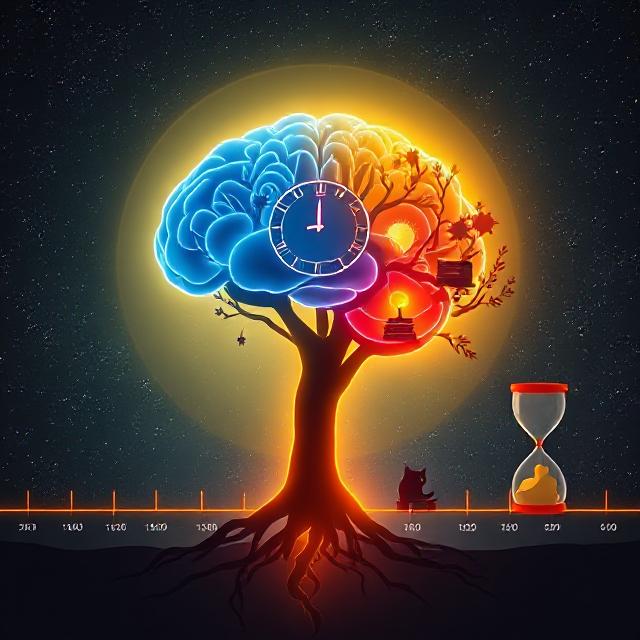
Table of Contents
Best Time of Day to Study, Based on Brain Rhythms
Your brain is not a machine—it’s a rhythmically cycling organ, deeply attuned to light, sleep, hormones, and internal clocks. The secret to better studying may not be found in trying harder, but in timing your study sessions to align with your natural brainwave rhythms.
This article explores how chronobiology, circadian rhythms, and neurophysiology shape the best time of day for learning. We’ll match the science of brainwaves to different time blocks in the day—so you can unlock deep focus, faster absorption, and longer memory retention without brute force.
Understanding Brain Rhythms and Study Timing
Your brain cycles through various electrical states throughout the day, marked by brainwave frequencies. These states influence attention, mood, creativity, and learning potential.
| Time of Day | Dominant Brainwaves | Mental State |
|---|---|---|
| Early Morning (6–9 AM) | Theta/Alpha | Reflective, intuitive, calm focus |
| Mid-Morning (9–12 PM) | Alpha/Beta | Peak focus, analytical clarity |
| Afternoon (12–4 PM) | Beta | Logical problem-solving, stamina |
| Late Afternoon (4–6 PM) | Alpha/Theta | Fatigue, slower cognitive speed |
| Evening (6–9 PM) | Theta/Alpha | Creative, associative memory |
| Night (9 PM onward) | Delta | Sleep prep, consolidation |
Matching your study activities to the right wave state means working with your biology instead of against it.
☀️ Early Morning (6 AM – 9 AM): Best for Reflective Planning
Right after waking, your brain is still resonating in theta (4–7 Hz) and early alpha (8–10 Hz) waves. This is a dreamlike state of associative, intuitive thinking. You’re less analytical—but more holistic.
Best for:
- Journaling and reviewing yesterday’s work
- Creative ideation
- Big-picture planning
- Meditation, affirmations, visualizations
Tip: Use this time to set intention, not memorize details. You’re syncing subconscious insight with conscious goals.
Mid-Morning (9 AM – 12 PM): Peak Study Window
This is your brain’s prime time for sustained attention, logic, and language tasks. Alpha transitions into low- to mid-range beta (12–18 Hz), giving you mental sharpness without fatigue.
Best for:
- Reading dense material
- Writing or note-taking
- Studying abstract or technical content
- Memorization and retention exercises
Tip: Use Pomodoro cycles and beta brainwave entrainment to enhance clarity. Avoid multitasking. This is where deep work happens.
🕑 Afternoon (12 PM – 4 PM): Extended Focus and Application
Energy dips slightly post-lunch, but this can still be productive if you’ve fueled properly and stayed hydrated. Your brain remains in beta, favoring execution over insight.
Best for:
- Review sessions
- Problem-solving (math, logic)
- Practice tests or exercises
- Applying learned concepts
Tip: Take movement or breathing breaks every hour to maintain energy. Chewing gum, standing desks, or upbeat playlists can help sustain arousal levels.
Late Afternoon (4 PM – 6 PM): Mental Fatigue Zone
This is where cognitive stamina drops, and alpha/theta return. Attention weakens, but creativity and associative thinking rise.
Best for:
- Concept mapping
- Teaching or explaining ideas to others
- Mind-mapping, flashcards, brainstorming
- Low-pressure creative synthesis
Tip: Shift to relaxed focus tasks. Walk, stretch, or re-read notes aloud to engage multisensory memory consolidation.
Evening (6 PM – 9 PM): Creative Learning Time
As melatonin begins to rise and your cortisol tapers off, theta waves become more prominent. This phase boosts pattern recognition, emotional encoding, and creative reorganization.
Best for:
- Studying metaphors, languages, or philosophies
- Rewriting notes into your own words
- Listening to educational audio while relaxing
- Reading fiction, poetry, or reflective texts
Tip: Pair evening study with ambient music or binaural beats in theta range (6–8 Hz). Use warm lighting to support melatonin release.
Night (After 9 PM): Not for New Learning—But Crucial
Your delta waves (0.5–4 Hz) take over during deep sleep. This is when your brain:
- Consolidates new memories (especially hippocampus-based)
- Prunes weak neural connections
- Strengthens pattern recall and insight
Best use of this time:
- Wind down naturally—avoid caffeine, screens, or stress
- Reflect on what you learned
- Use “active recall” in bed: recite key points mentally
- Trust your brain to integrate knowledge overnight
Tip: Protect sleep like a sacred ritual. Studying hard but sleeping poorly ruins memory gains.
Study Cycle Example (Daily Rhythm Plan)
| Time | Activity | Brain State |
|---|---|---|
| 7:30 AM | Journaling + Planning | Theta/Alpha |
| 9:00 AM | Reading & Notes | Alpha/Beta |
| 10:30 AM | Practice Quiz | Beta |
| 12:30 PM | Review Flashcards | Beta |
| 2:00 PM | Concept Mapping | Alpha |
| 4:30 PM | Teach a Topic | Alpha/Theta |
| 7:00 PM | Creative Study | Theta |
| 9:00 PM | Mental Recap + Sleep | Delta (prep) |
Scientific Foundations
The timing of your brain’s alertness follows circadian and ultradian rhythms:
- Circadian (~24 hr cycle): Controls hormone release (cortisol, melatonin), temperature, and alertness peaks.
- Ultradian (~90–120 min cycles): Controls attention span and fatigue during waking hours.
Aligning with these waves boosts:
- Cognitive performance (Blatter & Cajochen, 2007)
- Memory consolidation (Walker & Stickgold, 2006)
- Mental clarity and emotional regulation (Posner & Petersen, 1990)
Final Thoughts: Find Your Personal Peak
While general patterns help, every brain has its own rhythm. Some people peak at dawn. Others are night owls.
Experiment:
- Try 3–4 study blocks at different times for one week.
- Record focus, clarity, and retention.
- Adjust your routine around your findings.
Sustainable studying isn’t just about what you do—it’s when you do it.
Action Steps
- Download our Brainwave-Based Study Planner
- Try the Brainwave-Optimized Focus Playlist
- Subscribe to the BrainWave Dispatch for more tools and rituals
